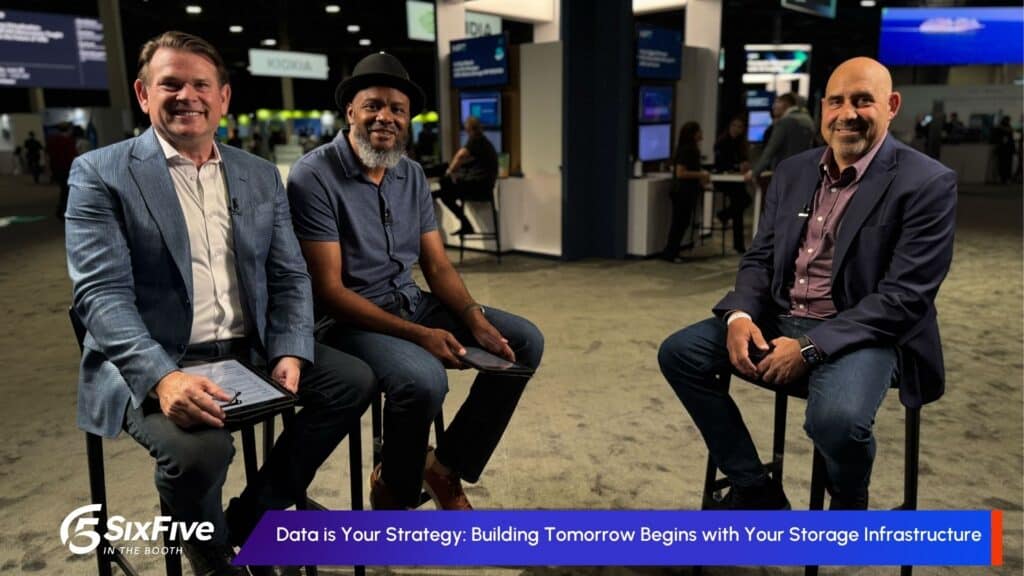The News: Avaya held its Global Industry Analyst Summit in mid-April, where the executive team detailed the company’s strategic vision, execution plan, and messaging, focusing on its new Avaya Experience Platform (AXP), its new unified communication (UC) portfolio, and its strategy of enabling innovation without disruption. The company, which emerged from bankruptcy protection in May 2023, has been seeking to rebuild trust with its customers and partners, and laid out a strategic plan for winning back former customers and driving new business. You can check out the press release from Avaya here on its new platform, and a release detailing the company’s new business strategy at this link.
Avaya Continues Business Momentum, Crystalizes Messaging and Strategy
Analyst Take: Avaya held its Global Industry Analyst Summit in mid-April and laid out its strategic vision, execution plan, and messaging for the industry analyst community. The company, which emerged from bankruptcy protection in May 2023, has overhauled much of its management team and is seeking to recast itself as a leading provider of enterprise customer experience (CX) technology and services.
The company’s core offerings include its AXP, which is the company’s single platform for contact center and engagement, and its Avaya Communication and Collaboration Suite with solutions designed to support UC. On a global basis, annual spending on contact center platforms and applications is projected to reach $13.7 billion by 2027, reflecting the desire of companies to use contact centers as a focal point for customer interactions across voice and digital channels. This forecast bodes well for Avaya, which is taking a strategic approach to winning back customers and providing current customers with enhanced features and functionality.
Led by CEO Alan Masarek, the company highlighted several key initiatives and messages at the industry summit, which I discuss and break down below.
Avaya Is Simplifying Its Product Marketing Approach, Focusing on a Single Platform for Contact Center and a Single Suite for UC
Although the news was previously announced, Masarek reinforced the company’s new product strategy of taking a platform-based approach to delivering CX solutions. The company’s AXP is being positioned as a platform that can deliver better experiences, regardless of whether companies choose to deploy the solution on-premises, in a private cloud, in a public cloud, or within a hybrid environment that combines the approaches.
Avaya provided new product names for these types of deployments under the Avaya Experience Platform:
- Avaya Experience Platform™ (AXP) On-Prem (formerly Avaya Call Center Elite)
- Avaya Experience Platform™ (AXP) Private Cloud (formerly Avaya Enterprise Cloud)
- Avaya Experience Platform™ (AXP) Public Cloud (formerly Avaya Experience Platform CCaaS)
Avaya’s approach is to be able to deliver cutting-edge CX features and services, such as artificial intelligence (AI) and process automation, without locking in an organization to a specific deployment model or timeframe. Avaya calls this strategy “innovation without disruption,” letting its customers build on top of, rather than rip-and-replace, their existing systems, processes, and investments.
Masarek indicated that although the company will support a customer’s move to a cloud-based deployment, Avaya’s new strategy is to support a company’s move to the cloud at their pace while layering in these advanced features, which can be accessed and used regardless of the type of deployment. By integrating new technologies without disrupting the technology customers already have in place, Avaya says that it can reduce time-to-value for new technology implementation while minimizing disruption.
This appears to be a solid strategy, particularly for larger customers that have sunk significant resources into an on-premises solution and do not want to expend additional financial resources, effort, and time to shift operations to the cloud immediately. While smaller organizations may have the ability to nimbly shift to a full cloud deployment, larger organizations—or those operating within highly regulated industries—often are rightly concerned about issues such as data sovereignty, security, customization and migration issues, and cost, and in these cases, a migration to a public cloud solution may not be the best solution.
Avaya Continues to Partner with Other Leading Vendors to Meet Customers Where They Are
One of the other key messaging points from the analyst event was that Avaya is seeking to become the platform for UC, even if the customer does not want to use the Avaya Communications and Collaboration Suite to serve as the frontend collaboration application. Avaya has announced integrations with Zoom Workplace and Teams. For UC, Avaya’s large customers can use the company’s Aura solution for calling while leveraging Zoom or Microsoft Teams for collaboration, reflecting the company’s strategy of being comfortable serving as a communications orchestration platform. Ultimately, this strategy appears sound, as organizations increasingly prefer to find solutions that let them use the tools they are comfortable using, rather than those they are forced to use.
This approach plays into the ‘innovation without disruption’ messaging by allowing customers to be the beneficiaries of innovations provided via Zoom and Teams, while these incumbent collaboration platforms continue to deliver new innovations, without requiring them to use an application they are not familiar or comfortable with.
Playing to Its Strength
Avaya management discussed its current strategy, which involves focusing its efforts on its largest customers, which include multinational organizations, government entities, and other large companies, which are spread out among several industries. Despite Avaya’s past financial difficulties, the company still has a sizeable contingent of these customers that Avaya says are seeking technology innovation but have complex requirements and needs that preclude the implementation of a full rip-and-replace migration to the cloud. As such, Avaya is focused on meeting their current technology needs while supporting digital transformation efforts on their timetable.
The challenge Avaya has with this approach is executing the strategy of serving two disparate types of customers. Indeed, most of Avaya’s revenue is derived from a relatively small percentage of its overall customer base. These very large customers have very different needs than the remainder of Avaya’s client base. While Avaya says it will continue to support all of its customers, regardless of size, there may be challenges if the company focuses so much effort on the largest customers and neglects the organizations that have the potential to become larger and more valuable customers in the future.
Avaya’s Strategy Appears to Be Sound
Avaya’s refocused strategy and messaging appear sound and make logical sense. It is clear that not all customers should move to the cloud, but that should not necessarily preclude them from getting access to the latest technology. Avaya is smart to meet these customers where they are and help them achieve their business goals without forcing them to migrate to the cloud. It is clearly a change in strategy from a couple of years ago, but one that makes sense for large organizations or those that have specific requirements that may introduce more complexity when trying to move to a public cloud solution.
Avaya is also reading the tea leaves and positioning itself as a more open platform in the UC space by enabling integrations with the leading collaboration vendors. Rather than try to beat the incumbents in a very competitive space, Avaya is taking the path with the least friction, and likely will be rewarded for doing so.
Now, Avaya needs to execute on its strategy, which will require discipline and follow-through, ensuring it hits its promised deadlines for feature set enhancements, new integrations, and other capabilities. By doing so, it will help engender the trust among its customers that had eroded under previous leadership,
Disclosure: The Futurum Group is a research and advisory firm that engages or has engaged in research, analysis, and advisory services with many technology companies, including those mentioned in this article. The author does not hold any equity positions with any company mentioned in this article.
Analysis and opinions expressed herein are specific to the analyst individually and data and other information that might have been provided for validation, not those of The Futurum Group as a whole.
Other Insights from The Futurum Group:
Avaya Is Making Strong Progress in Business and Product Enhancements
New Avaya-Alvaria Partnership to Focus on Proactive Customer Experience, Outbound Engagement
2023 Customer Experience Trends and a Look Ahead
Author Information
Keith Kirkpatrick is Research Director, Enterprise Software & Digital Workflows for The Futurum Group. Keith has over 25 years of experience in research, marketing, and consulting-based fields.
He has authored in-depth reports and market forecast studies covering artificial intelligence, biometrics, data analytics, robotics, high performance computing, and quantum computing, with a specific focus on the use of these technologies within large enterprise organizations and SMBs. He has also established strong working relationships with the international technology vendor community and is a frequent speaker at industry conferences and events.
In his career as a financial and technology journalist he has written for national and trade publications, including BusinessWeek, CNBC.com, Investment Dealers’ Digest, The Red Herring, The Communications of the ACM, and Mobile Computing & Communications, among others.
He is a member of the Association of Independent Information Professionals (AIIP).
Keith holds dual Bachelor of Arts degrees in Magazine Journalism and Sociology from Syracuse University.





